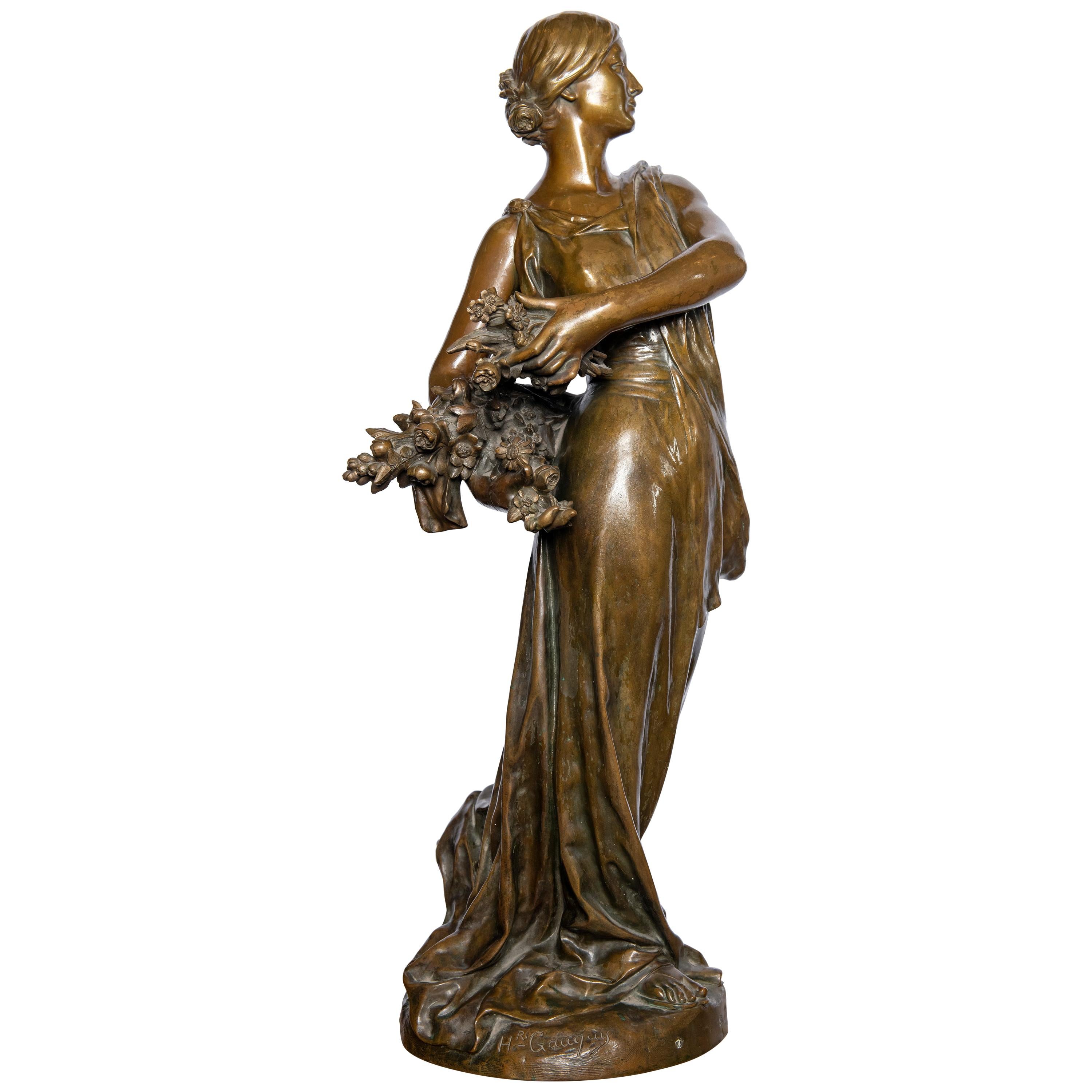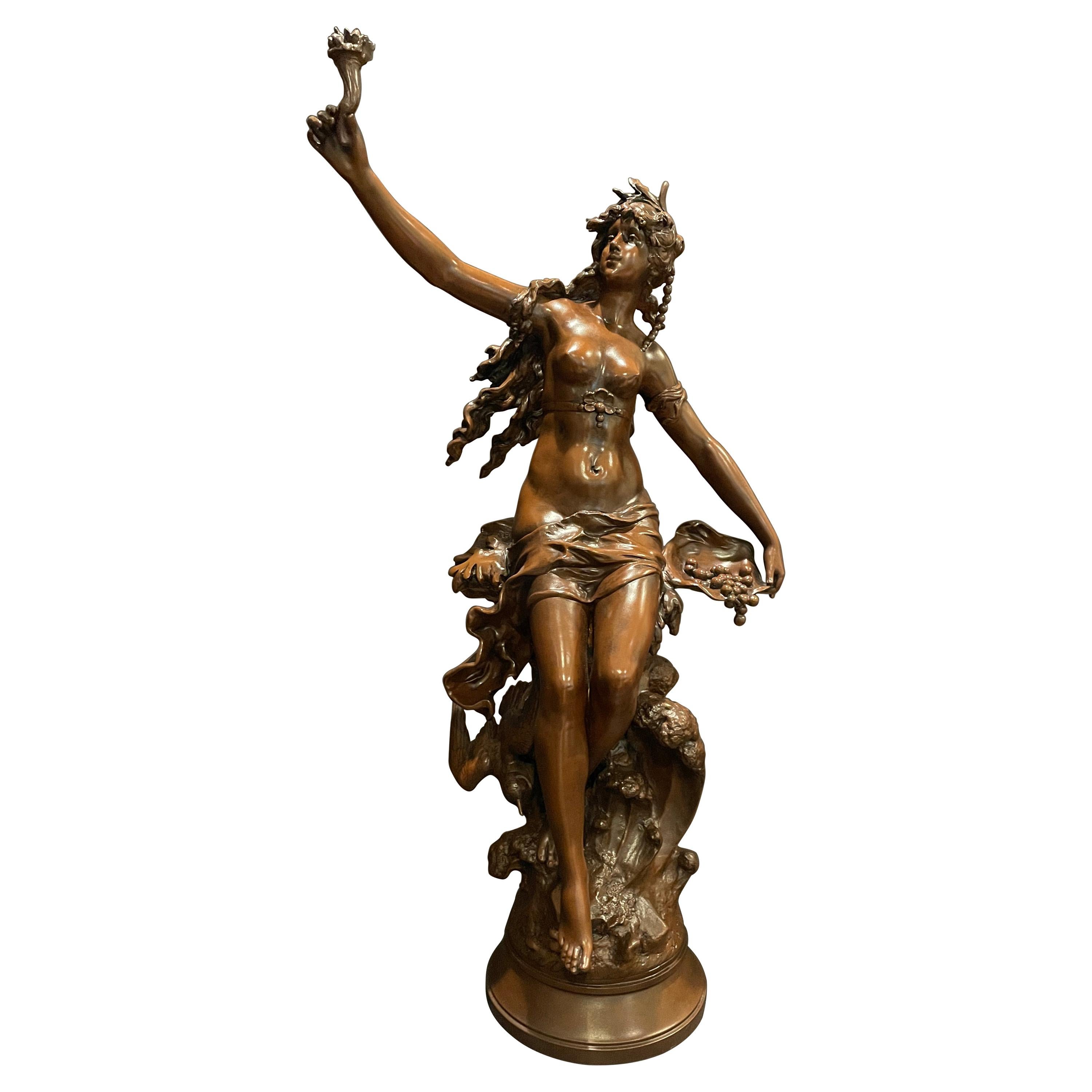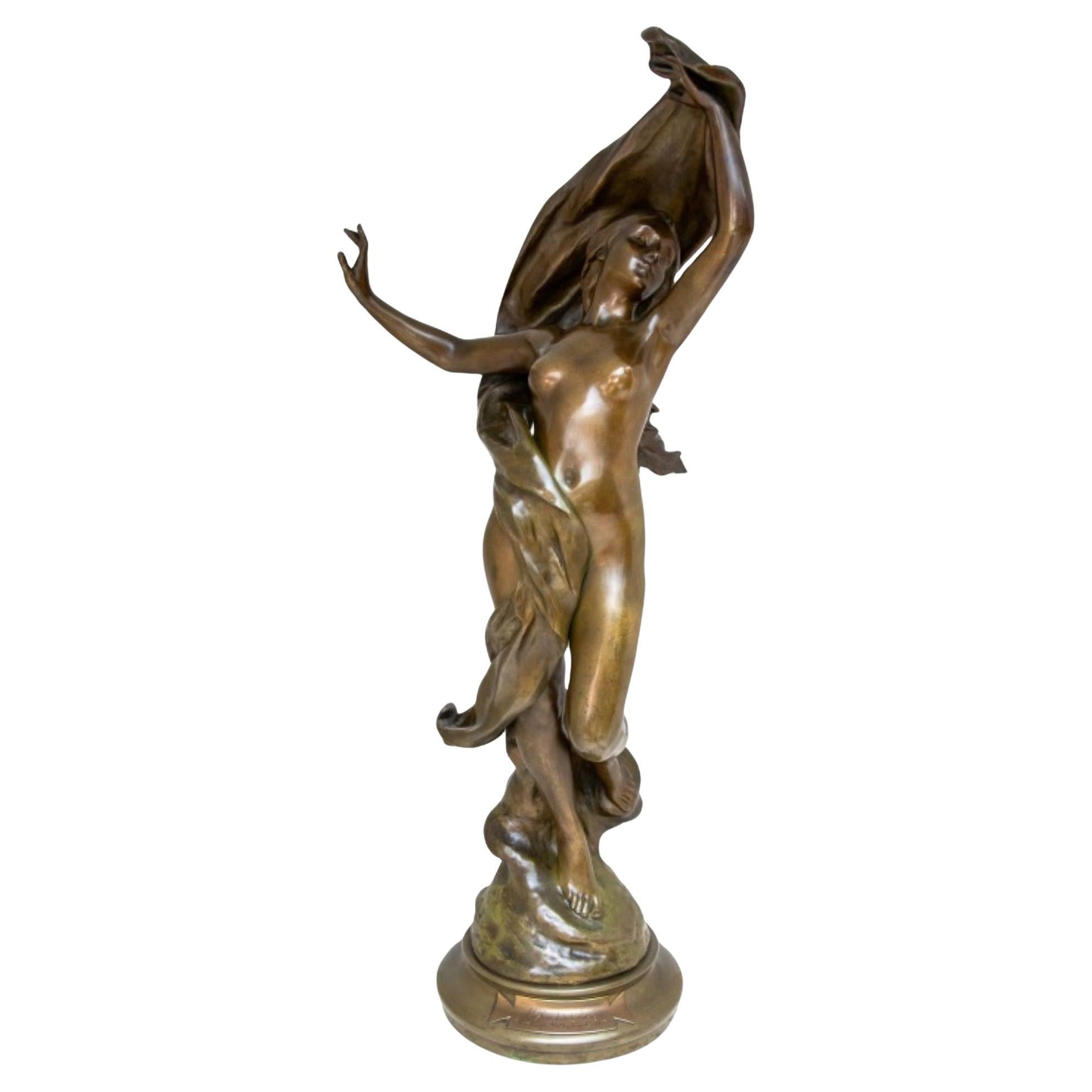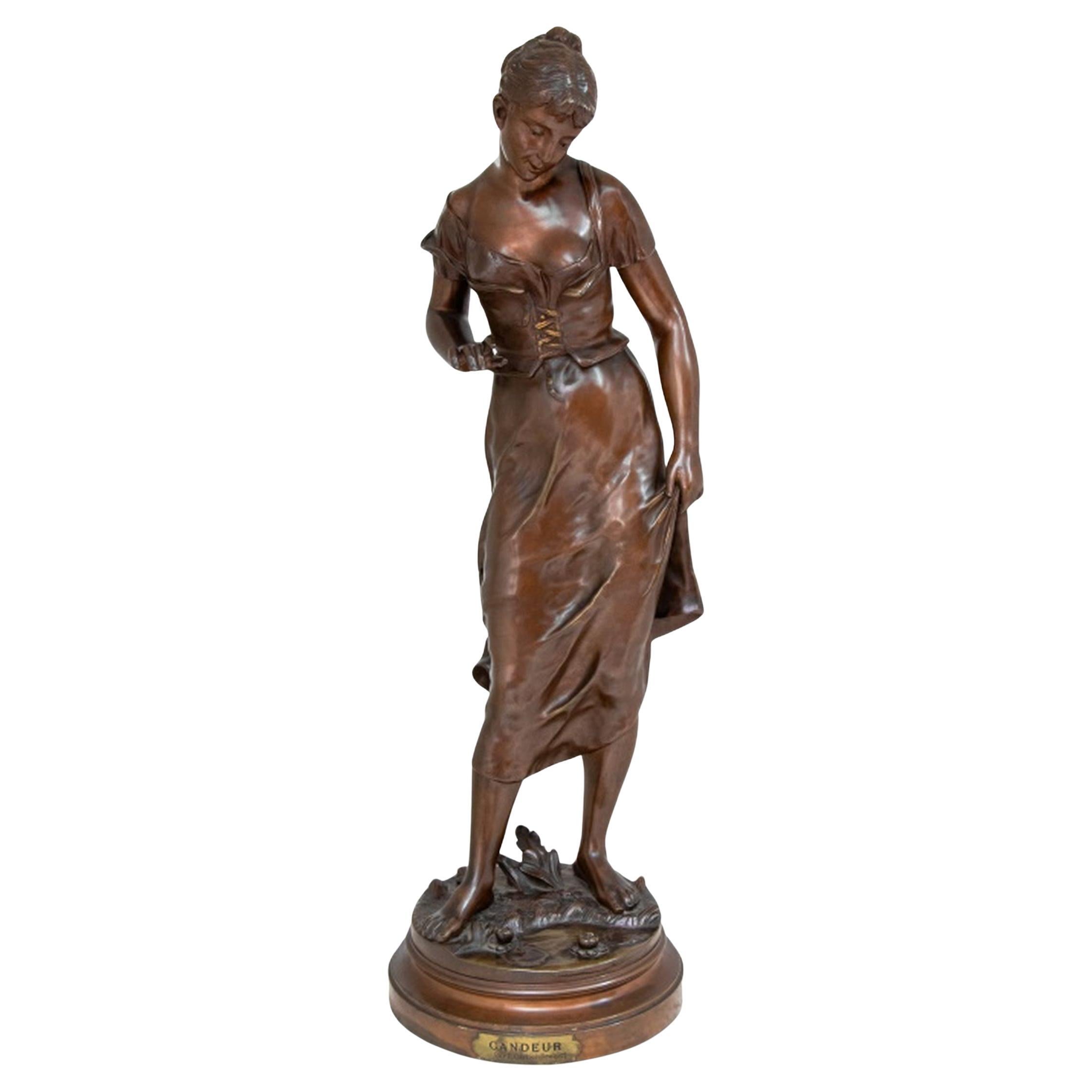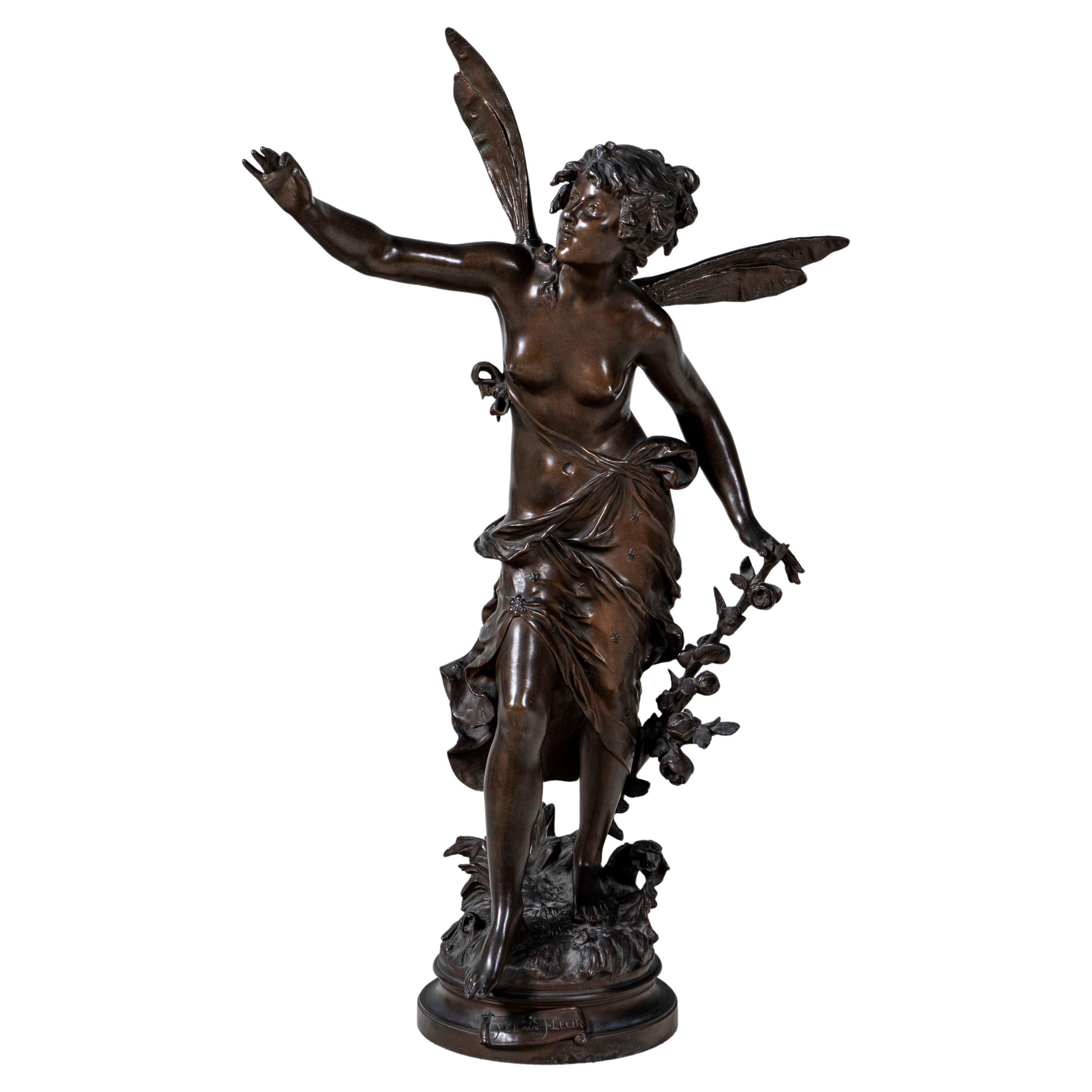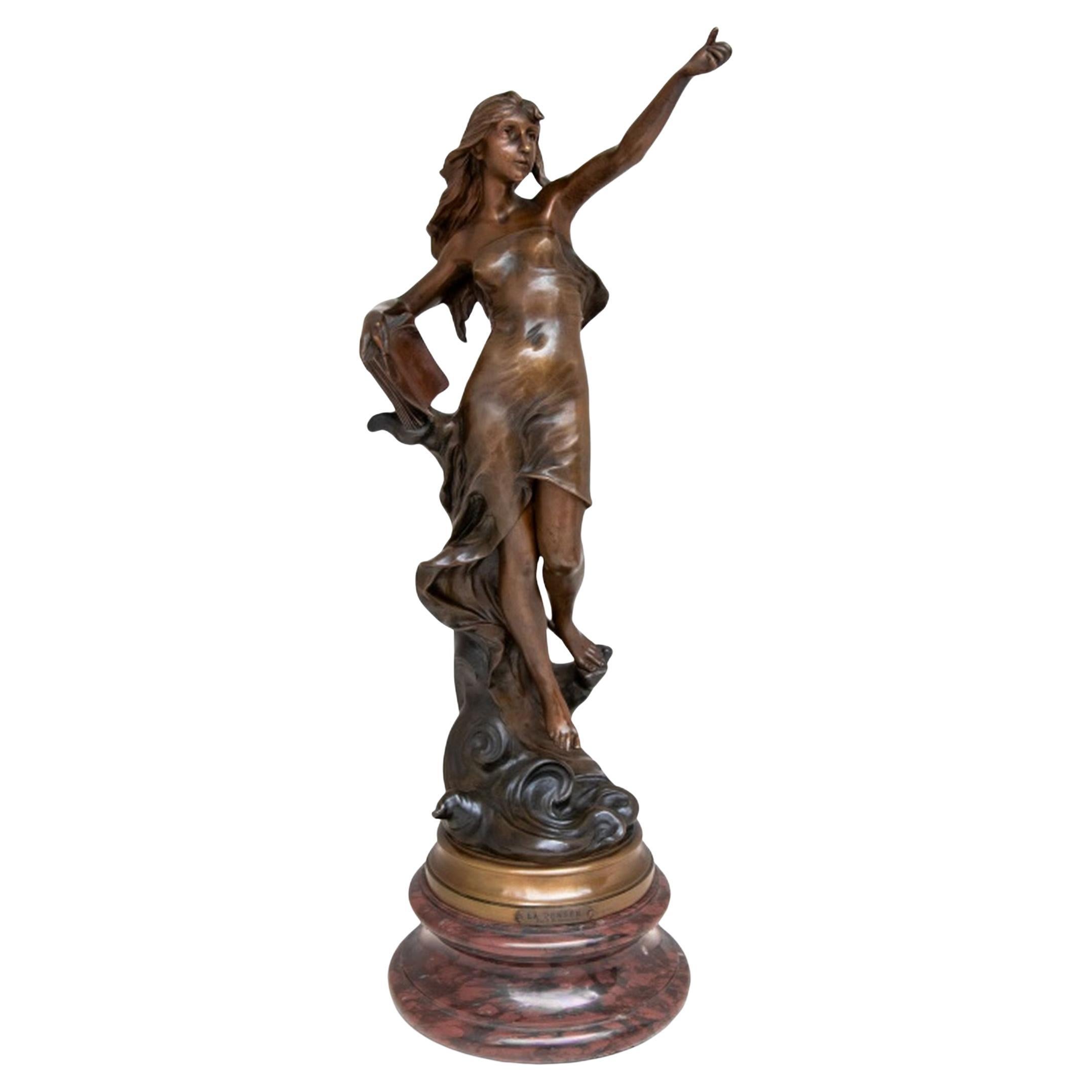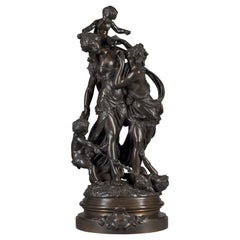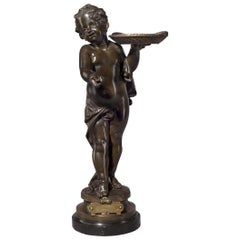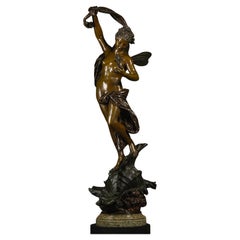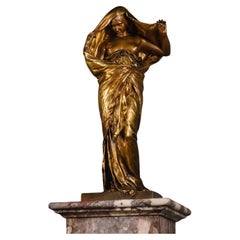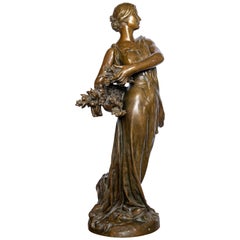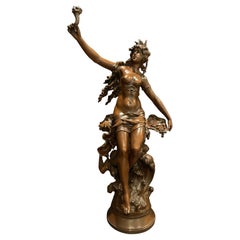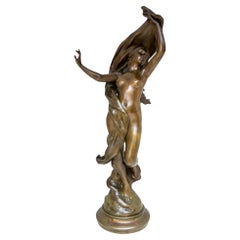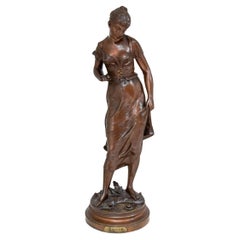Items Similar to 'Grand Nu Aux Feuillages', a Fine Patinated Bronzed Figural Group, circa 1900
Want more images or videos?
Request additional images or videos from the seller
1 of 5
'Grand Nu Aux Feuillages', a Fine Patinated Bronzed Figural Group, circa 1900
$22,043.54
£16,000
€18,684.90
CA$30,520.82
A$33,321.43
CHF 17,469.06
MX$404,701.63
NOK 218,160.16
SEK 206,001.37
DKK 139,462.86
About the Item
'Grand Nu Aux Feuillages', a fine patinated bronzed figural group by Alois Mayer.
German, circa 1900.
Signed 'A. Mayer'.
Alois Mayer (1855-1936) Was a German Sculptor who worked mainly in bronze, creating statues, small sculptures and important public monuments.
Born March 3rd 1855, to Franz Joseph and Regina Mayer, little is known of Alois‘s early life. He studied at the Munich Academy of Fine Arts and made the city his permanent home from 1882. From 1855 he was an assistant professor in the studio of William of Rümann and assisted in the production of the equestrian statue of the Prince Regent Leopold for the Nuremberg Central Station. Other important public monuments included the Bismarck monument in Frankfurt-Höchst and the Alfred Krupp Memorial in Essen.
He was a member of the National Association of Visual Artists in Germany and the Munich Artists' Association.
Bibliography:
Alois Mayer (sculptor). In: Ulrich Thieme , Felix Becker u. a .: General Encyclopedia of Artists from antiquity to the present day. Volume 24, EA Seemann, Leipzig 1930.
- Creator:Alois Mayer (Sculptor)
- Dimensions:Height: 58.27 in (148 cm)Width: 19.69 in (50 cm)Depth: 15.75 in (40 cm)
- Materials and Techniques:
- Place of Origin:
- Period:
- Date of Manufacture:circa 1900
- Condition:
- Seller Location:Brighton, GB
- Reference Number:Seller: B721101stDibs: LU1028012222803
About the Seller
5.0
Recognized Seller
These prestigious sellers are industry leaders and represent the highest echelon for item quality and design.
Established in 1964
1stDibs seller since 2014
58 sales on 1stDibs
Typical response time: 6 hours
Associations
The British Antique Dealers' AssociationLAPADA - The Association of Arts & Antiques Dealers
- ShippingRetrieving quote...Shipping from: Brighton, United Kingdom
- Return Policy
Authenticity Guarantee
In the unlikely event there’s an issue with an item’s authenticity, contact us within 1 year for a full refund. DetailsMoney-Back Guarantee
If your item is not as described, is damaged in transit, or does not arrive, contact us within 7 days for a full refund. Details24-Hour Cancellation
You have a 24-hour grace period in which to reconsider your purchase, with no questions asked.Vetted Professional Sellers
Our world-class sellers must adhere to strict standards for service and quality, maintaining the integrity of our listings.Price-Match Guarantee
If you find that a seller listed the same item for a lower price elsewhere, we’ll match it.Trusted Global Delivery
Our best-in-class carrier network provides specialized shipping options worldwide, including custom delivery.More From This Seller
View All'Bacchantes', a Fine Patinated Bronze Figural Group After Clodion, circa 1870
By Claude Michel Clodion
Located in Brighton, West Sussex
'Bacchantes', a fine patinated bronze figural group after Claude Michael Clodion, French (1738-1814).
French, circa 1870.
Signed 'Clodion' to the base and inscribed 'BACCHANTE...
Category
Antique Late 19th Century French Figurative Sculptures
Materials
Bronze
'Bonne Année, Bonne Santé', a Bronze Figure by Adolphe Maubach, circa 1900
By Adolph Maubach
Located in Brighton, West Sussex
'Bonne Année, Bonne Santé' -A fine patinated bronze figure by Adolphe Maubach.
French, circa 1900.
Signed 'Adolphe Maurbach' and bearing a gilt-bronze title plaque 'Bonne Anné...
Category
Antique Late 19th Century French Figurative Sculptures
Materials
Bronze
A Fine And Large Patinated Bronze Figure Of A Sea Nymph
By Luca Madrassi
Located in Brighton, West Sussex
Luca Madrassi (Italian, 1848–1916)
A Fine And Large Patinated Bronze Figure Of A Sea Nymph, Entitled ‘La Fée Des Mers’ (The Spirit Of The Seas)
The semi clad winged nymph, holding a...
Category
Antique 19th Century Italian Figurative Sculptures
Materials
Bronze
Bronze Figure of 'La Nature Se Dévoilant Devant La Science'
By Louis Ernest Barrias
Located in Brighton, West Sussex
Bronze figure of 'La Nature se dévoilant devant la Science' by Louis-Ernest Barrias.
Inscribed 'E. Barrias' and with Susse Frères foundry cachet and further Susse inscription.
Thi...
Category
Early 20th Century French Figurative Sculptures
Materials
Bronze
'L'innocence Tourmentée Par L'amour' A Figural Group by Luca Madrassi circa 1900
By Luca Madrassi
Located in Brighton, West Sussex
'L'innocence Tourmentée Par L'amour' - A fine patinated bronze figural group by Luca Madrassi.
French, circa 1900.
Inscribed 'L.MADRASSI.PARIS'.
With Gervais foundry cachet...
Category
Antique Late 19th Century French Belle Époque Figurative Sculptures
Materials
Bronze
'Le Puits Qui Parle' an Exhibition Bronze, Paul Eugène Mengin French, circa 1900
By Susse Freres, Paul Eugène Mengin 1
Located in Brighton, West Sussex
'Le Puits Qui Parle' (The Speaking Well) - An Important Exhibition Bronze Group, by Paul Eugène Mengin.
Signed to the cast 'P MENGIN', and inscri...
Category
Early 20th Century French Figurative Sculptures
Materials
Bronze
You May Also Like
Bronze Sculpture Signed H. Gauquie, France, Late 19th Century
By Henri Desire Gauquie
Located in Buenos Aires, Buenos Aires
Bronze sculpture signed H. Gauquie, France, late 19th century.
Category
Antique Late 19th Century French Art Nouveau Figurative Sculptures
Materials
Bronze
$11,200 Sale Price
20% Off
Large Original 19th Century Patinated Spelter Sculpture by Moreau
By Louis & François Moreau
Located in Norwood, NJ
Large 19th century French sculpture by L. & F. Moreau depicting a young girl holding a bowl of berries seated on cresting waves and a bird in flight. Made of spelter, or pot metal, with a beautiful warm, rich chocolate brown patina. Signature on base: L.&.F. Moreau
L.&.F. Moreau two brothers who were perhaps best known for creating highly ornate clocks...
Category
Early 20th Century French Belle Époque Figurative Sculptures
Materials
Spelter
Henri Godet "L'Aurore" Patinated Bronze Sculpture
By Henri Godet
Located in Astoria, NY
Henri Godet (French, 1863-1937) "La Reveil de L'Aurore" [The Awakening of Dawn] Patinated Bronze Sculpture, early 20th century, on a circular base with applied plaque "La Reveil de L...
Category
Early 20th Century French Art Nouveau Figurative Sculptures
Materials
Bronze
Emile Carlier "Candeur" Patinated Bronze
By Carlier
Located in Astoria, NY
Emile Francois Carlier (French, 1849-1927) "Candeur", Patinated Bronze Sculpture, late 19th century, the standing figure peering into a pond at her feet, signed to base, on a circula...
Category
Antique Late 19th Century French Belle Époque Figurative Sculptures
Materials
Bronze
Bronze Alloy Sculpture, Signed L. Moreau, France, Late 19th Century
By Louis Auguste Moreau
Located in Buenos Aires, Buenos Aires
Bronze Alloy sculpture "Fée Aux Fleurs", Signed L. Moreau, France, Late 19th Century.
Category
Antique Late 19th Century French Art Nouveau Figurative Sculptures
Materials
Bronze
Jean-Baptise Germain "La Pensee" Patinated Bronze
By Jean-Baptiste Germain
Located in Astoria, NY
Jean-Baptise Germain (French, 1841-1910) "La Pensee" Patinated Bronze Figural Sculpture, late 19th century, the standing figure with outstretched arm and holding a book, signed to ba...
Category
Antique Late 19th Century French Belle Époque Figurative Sculptures
Materials
Bronze
More Ways To Browse
Cast Iron Figural
Cast Iron Figure
Prince Regent
Small Antique Statue
Franz Joseph
19th Century Bronze Equestrian Sculptures
Bronze Figural Groups
Small Bronze Statues
Nu Sculpture
Vintage Ceramic Figurines
19th Century Italian Carrara Marble Sculpture
Rosso Antique
Napoleon Bonaparte
African Carved Wooden Figures
Antique Relief Sculpture
Mannequins
Vintage Maidens
Antique French Bronze Statue
